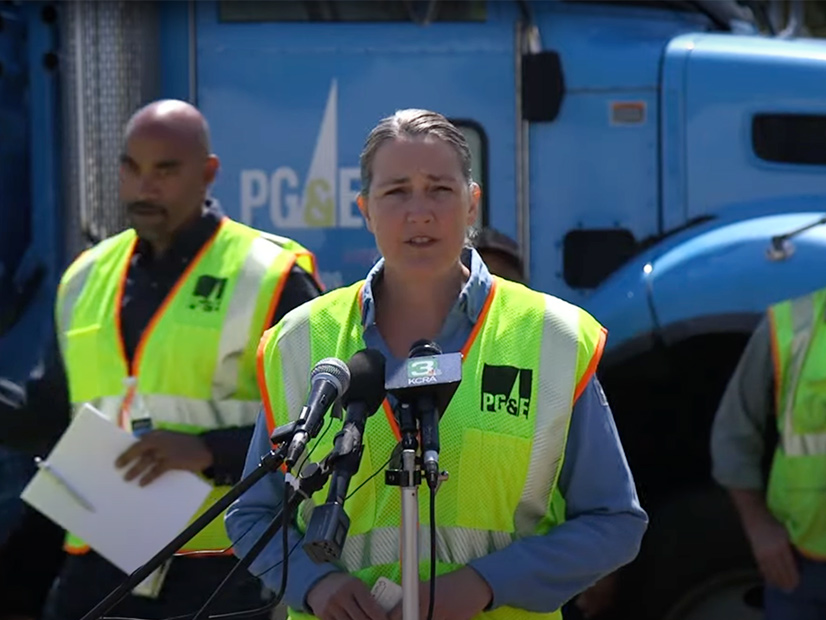Pacific Gas and Electric (NYSE:PCG) proposed the largest undergrounding effort in U.S. history on Wednesday, saying it would bury 10,000 miles of distribution lines in high-threat fire areas of Central and Northern California.
PG&E CEO Patti Poppe made the announcement at a news conference in Chico, near where the PG&E-caused Camp Fire destroyed the town of Paradise in November 2018 and where the Dixie Fire is now burning, possibly sparked by a PG&E line on July 13. (See PG&E Says Its Line May Have Started Dixie Fire.)
“We are here in Chico today because there’s a cloud of smoke in the air, and for many people that brings back traumatic memories and difficult times,” Poppe said. She said she understood that for many worried residents, “the Dixie Fire is a punch to the gut.”
She vowed, however, to make the utility safer after years in which it started catastrophic wildfires that killed more than 100 people, including at least 84 in Paradise.
“PG&E’s commitment represents the largest effort in the U.S. to underground power lines as a wildfire risk-reduction measure,” the company said in a news release.
Undergrounding will reduce the need for public safety power shutoffs, the intentional blackouts that are now a mainstay during the state’s prolonged fire season, PG&E said. It will also reduce the need for vegetation management, it said.
PG&E’s power shutoffs and faulty tree maintenance have subjected it to public outrage and heavy criticism from the federal judge overseeing the utility’s criminal probation stemming from the 2010 San Bruno gas explosion.
The Dixie Fire may have started near where a 70-foot pine tree fell onto a PG&E distribution line, Poppe said.
The Zogg Fire started when a pine tree struck a PG&E line, killing four people in a rural area near Redding, investigators with the California Department of Forestry and Fire Protection determined. (See PG&E Equipment Started Zogg Fire, Investigation Finds.)
Undergrounding often has been dismissed as too costly to perform on a large scale, potentially costing around $4 million per mile. PG&E owns 25,000 miles of overhead distribution lines in high-threat fire areas in the Sierra Nevada foothills and the state’s rugged coastal ranges.
But a series of PG&E demonstration projects have suggested that a massive effort could be possible, with cost savings achieved through scale and falling prices during years of work, Poppe and the utility said Wednesday.
“We don’t have a total price tag because we know it’s going to get cheaper over time,” Poppe said. “It will over time become even more affordable.”
The California Public Utilities Commission would need to approve the undergrounding proposal, and commissioners have repeatedly expressed concerns about rising utility bills as consumers are saddled with the costs of infrastructure upgrades and wildfire-prevention efforts.



